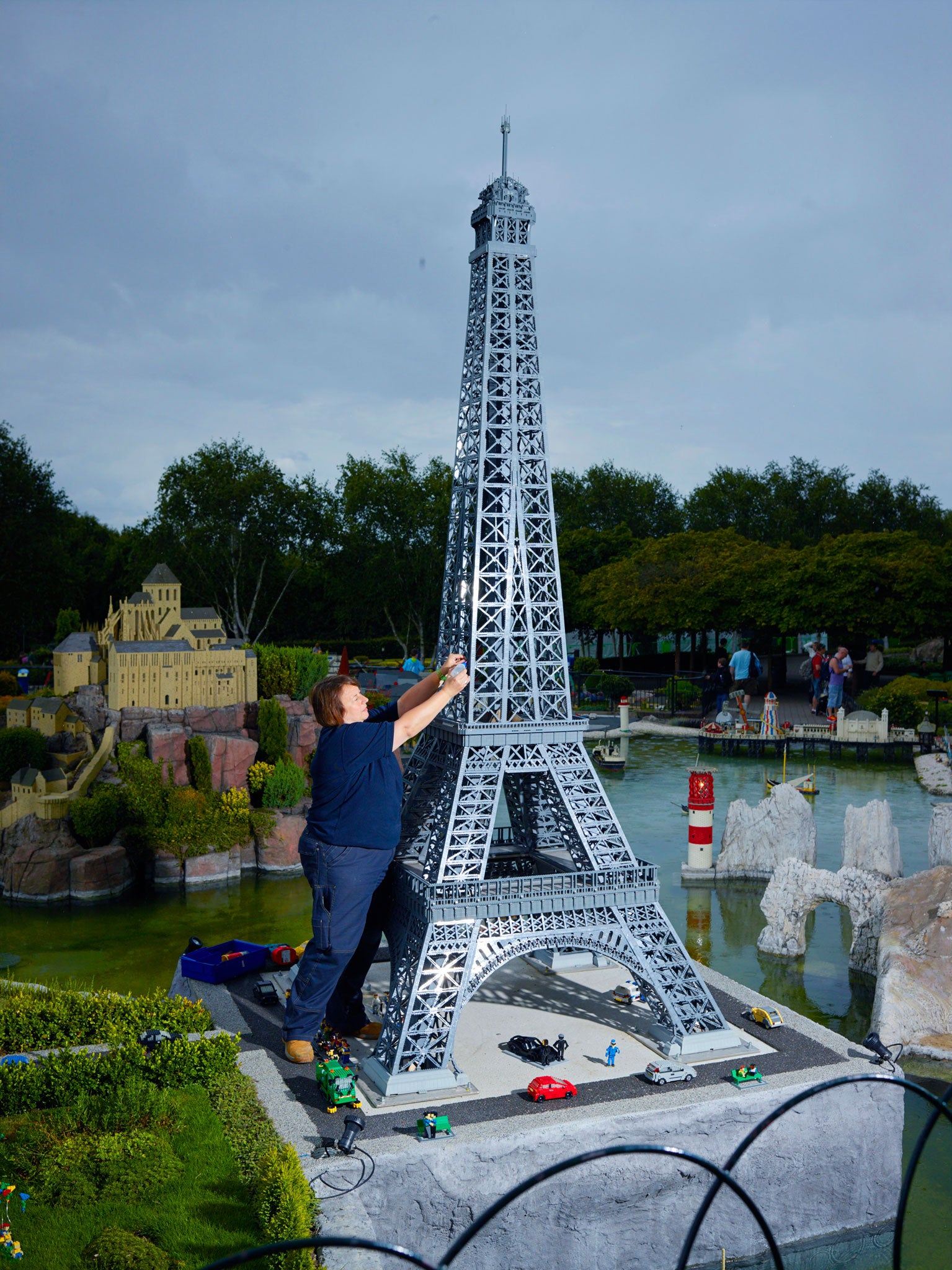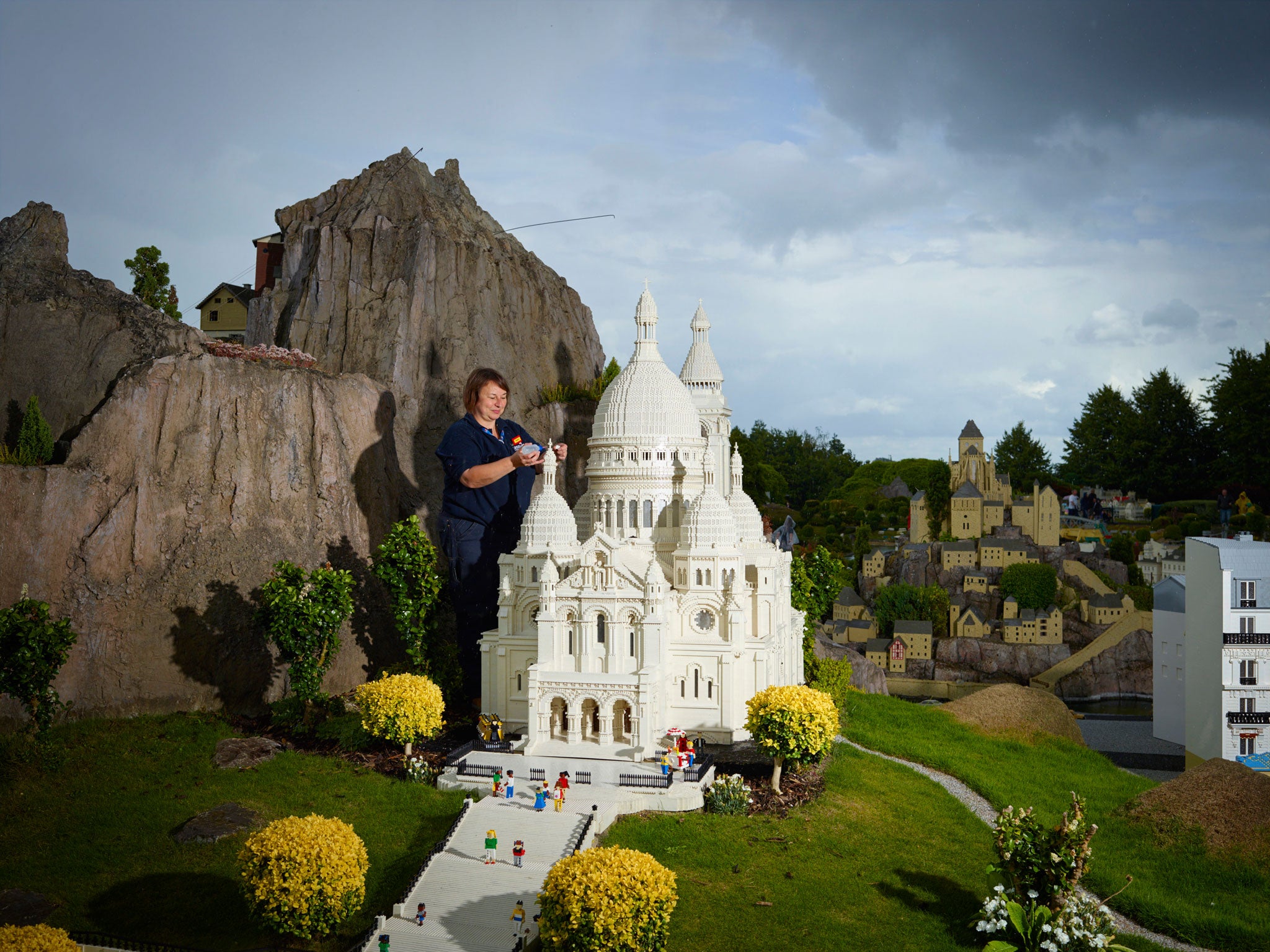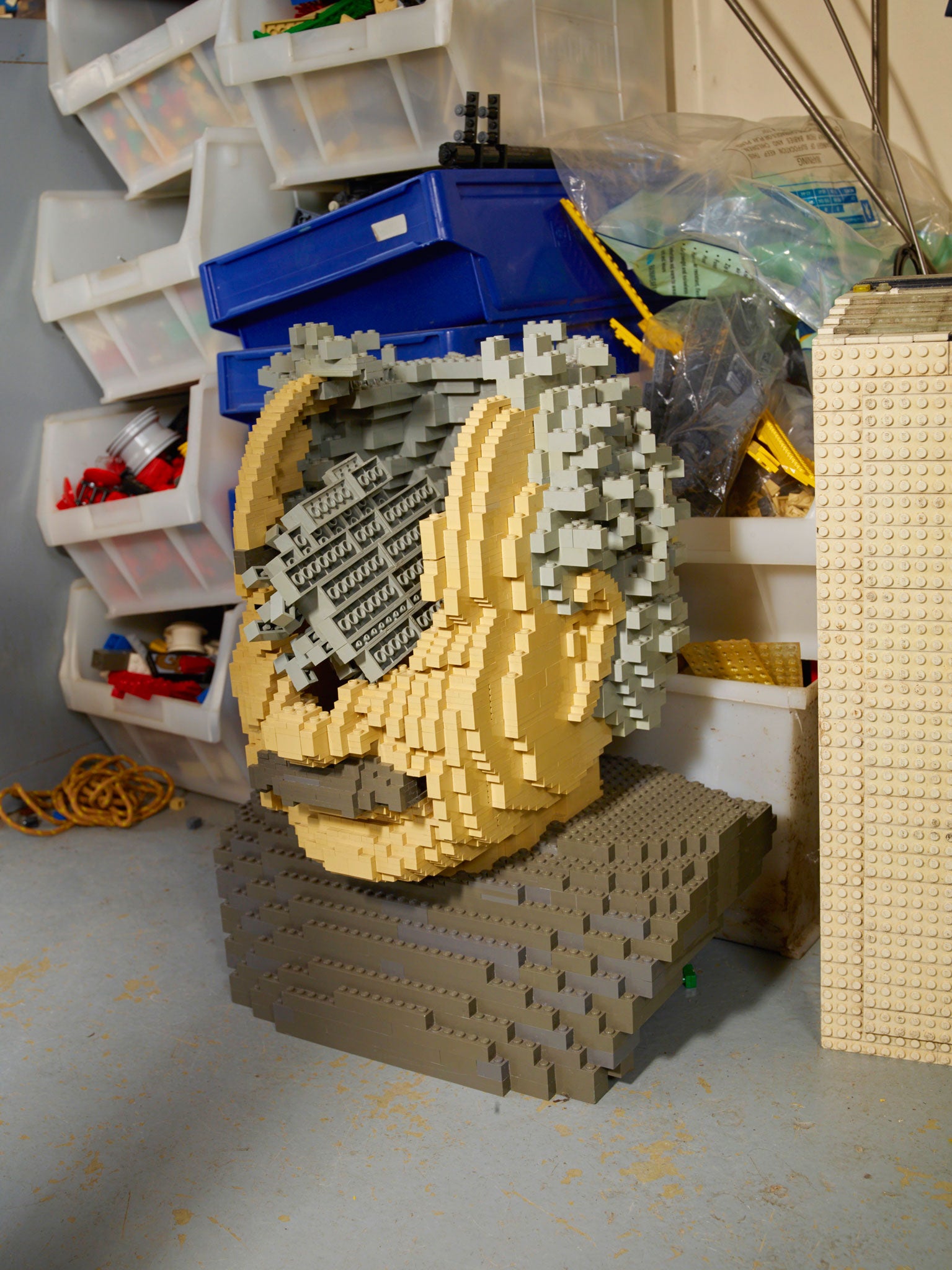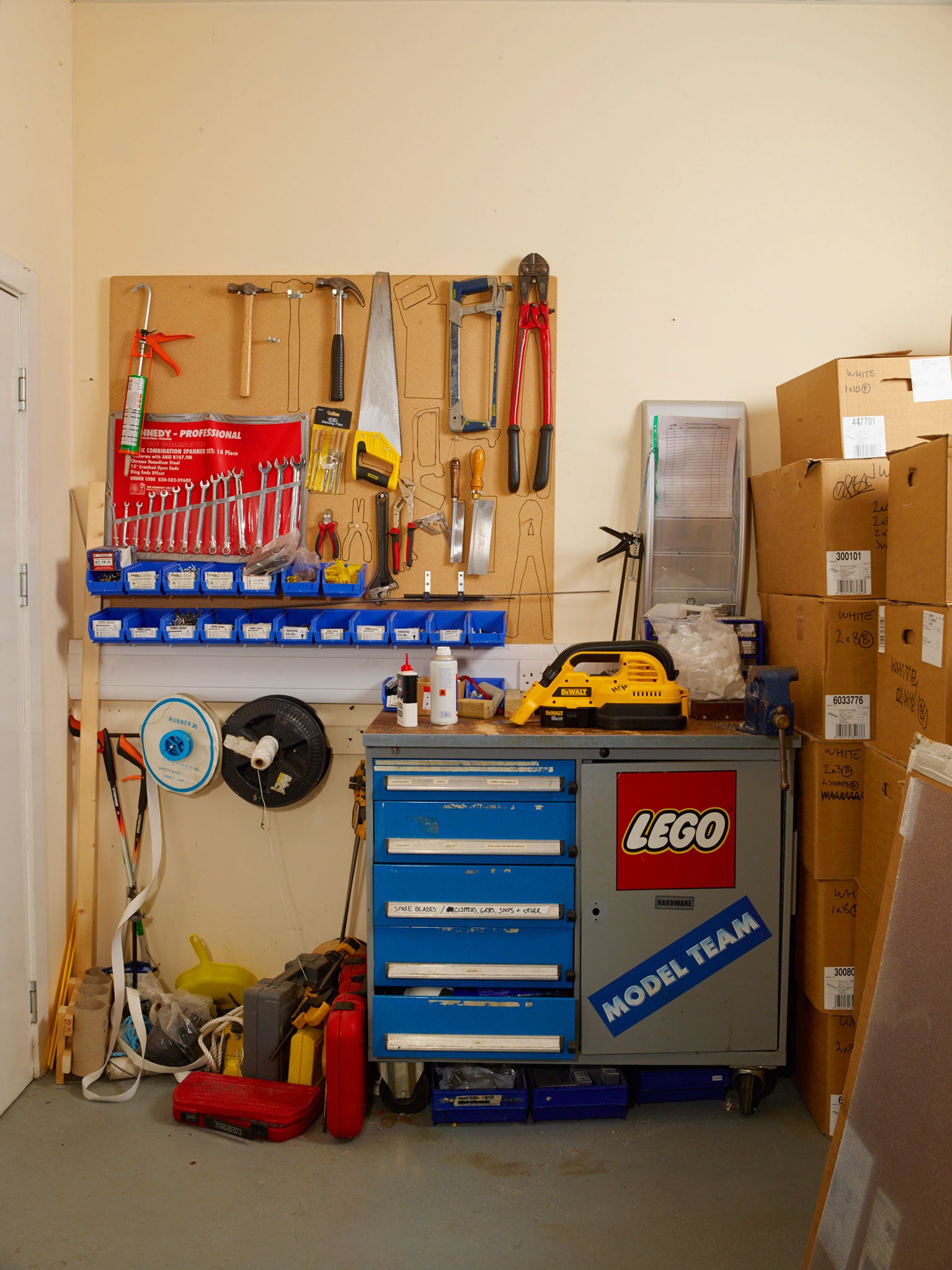Legoland Windsor's master model-makers reveal the tricks of their trade (including how to stop the kids wrecking your Eiffel Tower)
They are the master builders: Lego's crack team of model-makers, who have just glued down the last of 650,000 bricks as they recreate Paris in Windsor. Susie Mesure goes behind the scenes

Your support helps us to tell the story
From reproductive rights to climate change to Big Tech, The Independent is on the ground when the story is developing. Whether it's investigating the financials of Elon Musk's pro-Trump PAC or producing our latest documentary, 'The A Word', which shines a light on the American women fighting for reproductive rights, we know how important it is to parse out the facts from the messaging.
At such a critical moment in US history, we need reporters on the ground. Your donation allows us to keep sending journalists to speak to both sides of the story.
The Independent is trusted by Americans across the entire political spectrum. And unlike many other quality news outlets, we choose not to lock Americans out of our reporting and analysis with paywalls. We believe quality journalism should be available to everyone, paid for by those who can afford it.
Your support makes all the difference.Regardez les vélos!" a small boy gasps, spotting the famous French Vélib' bicycles parked outside the Louvre. "Et le voleur! Il a la Mona Lisa!" – his eye is drawn to an art thief making his escape, just one of the little details helping to bring this tiny tableau to life. Paula Laughton would be pleased: as Miniland co-ordinator at Legoland Windsor, the Parisian scene was her creation – although all six of Legoland's model-making team spent the winter replicating the French capital's landmarks.
Across the water from this pint-size recreation of one of the world's finest galleries looms the Eiffel Tower, four metres tall (about one-eightieth its real size). Yet even one of the world's most fun jobs – playing with Lego for money! – has "bad days", Laughton confesses. Constructing the tower did get "quite laborious. You'd think, 'I'm fed up with dark grey now.'"
Earlier, en route to Paris – just two minutes by foot from the skyscrapers and bridges of London in this miniature version of Europe – a group of schoolkids stand testimony to why the good days outweigh the bad in the world of bricks. "Wow!" one squeals. "It's just like Wembley Stadium!" It is, agrees Laughton, Wembley, though as she points out, it's "the old one". The new stadium, along with the Shard and Gaudi's Barcelona, are on her wish list of what she'd make if only she had the time – and the bricks. She looks across at the children: "You see, that's what matters here…" she trails off, clutching her chest, visibly emotional.
The strange thing is that for children, and so-called AFoLs – Adult Fans of Lego – an ever-growing tribe of grown-up enthusiasts, these are not just plastic bricks, or at least not after Laughton and her team have got their hands on them.
Back near the entrance to Legoland Windsor, I get Lego's own Golden Ticket: the chance to step inside the workshop where it all happens. The Model Making Studio is tucked up some spiral stairs at the back of the Last Chance Marketplace, where kits about to be discontinued can be bought at a discount. There's no stopping anyone from pressing their faces against the glass doors to see the team at work, but there is a strict no-entry policy.
Inside the studio are six desks piled high with bricks and models, old and new: half-built cranes, parrots, trains, cars – and this is but a fraction of the work going on. "The fun thing is trying to find something," says Laughton, casting her eye over the chaos on her colleague Marco Mirano's desk. She favours a more organised approach, and likes keeping her "washing machines" separate from her "Daleks", to use just two of the many nicknames bestowed upon the less-standard pieces. "Time is essential, really." So, behind each model-maker's work station is an elaborate storage system that separates each and every brick by colour, shape and size.

As fun as it might seem, even Lego model-makers have deadlines and budgets. "We have to buy in all our bricks, the same as everyone else, so we have to work out how many hours and bricks each model will take," explains Laughton. "Everything here is what you can buy in the shops; it's just that we're very lucky and have a lot of them. The idea is that if you come to the park and you see something you like, if you have enough bricks, you could produce that yourself." The models are glued together, but every brick has to be "Lego-correct", placed stud to stud without any cheating. The glue is vital only because little fingers can't resist fiddling.
Yet, despite the adhesive, much of the team's job is spent on basic repair work. "It is tactile, and people want to check to see if it's real. We have a rolling programme to replace everything, but it's a bit like the Forth Bridge; once you get to one end you're back to square one again." Laughton bargains on a seven-year shelf life for each model; outside in the elements, the oils in the plastic fade despite being UV-coated. Then there are the "accidents" to mend; Laughton lets slip that children at Legoland's Billund site in Denmark – one of six themed parks around the world – are better behaved.
A model-maker's day begins at 7am with a park inspection: they have three hours before it opens to check that everything is looking its best and, most importantly, fit for its job, whether that's a soldier changing guard at Buckingham Palace or the family waving hello to the day's visitors (a hand had fallen off this morning). "Figures go k missing, get knocked over," says Laughton. "There are a lot of animals in the night: rabbits, ducks." Summer, more prosaically, means "bird poo", and lots of it, which needs brushing off daily. Then there's the Legoland Hotel, which opened two years ago bang in the middle of the park. Its themed bedrooms are all full of models that require maintenance, from frogs and snakes to spiders and pirates: 1,600 in all.

Each model-maker has their own favourite builds: Kat James likes giving animals "their own character", while Dan Hawkins, the "newbie", who joined the team last year, prefers iconic buildings, Star Wars models, and anything to do with space. He designed the Eiffel Tower, all 230,000 bricks of it, mainly from photos that one of the team had taken on holiday there, although the internet dishes up images enough to work from otherwise.
Today, Hawkins is restoring cranes from the harbour "cluster" – Legoland speak for each replica Miniland world. He's had fun with the gas canisters, which are made from three of C3P0's head bricks with a tap stuck on top. "It's not about the parts you have but about thinking out of the box and doing something else with them. They're all interactive with each other," Laughton says. The team used pirate guns to recreate the ironwork on a replica Blackpool Tower for the Legoland Discovery Centre in Manchester, for example. Still, you'd need £50,000 to build your own Miniland Eiffel Tower.

But make no mistake, for all the romance of a simulated Paris, Legoland is all about the money: its parks, majority-owned and run by Merlin Entertainment, are there to drive sales for its 30 per cent stakeholder, the Lego Group. A family of two adults and two children who don't book in advance will pay more than £175 if they buy their tickets on the day. And each ride is based around a Lego retail kit, from Land of the Vikings to Knights Kingdom. "The idea," explains Laughton, "is that you're engulfed in the imagination of that model, so designers have to tie it all back to the Lego brand and Lego product." It has all helped Lego, on its knees financially just a decade ago, transform itself into the world's most profitable toymaker.
Laughton herself, now 42, is almost embarrassed to admit she only had one Lego kit as a child. "It was a house. I know it sounds awful but I didn't really get into it. I was more into drawing and designing and colouring."
Yet the drawing has stood her in good stead: even now, most of the model-makers prefer mapping their designs out on graph paper rather than using a computer. Chris Conboy is painstakingly recreating the new livery on a Scottish train for the Scotland cluster of landmarks; tiny shaded-in squares help him to recreate the exact pattern. Indeed, most model-makers have an art and design background – although Hawkins and Conboy snuck in without one – but Laughton, who trained in furniture design, says the most essential qualification is a "good visual eye and a logical mind about how it all fits together".
She always tells children that Maths and English are important – for counting the bricks and communicating ideas. Despite not having any children herself, Paula's skills are in high demand among friends' kids. "I have to say, 'It's my day off!'" She's never really off duty, though, and was photographing some fences at the weekend just for ideas.
If 17 years in the Model Making Studio have taught Laughton anything, it's that as soon as something leaves the workshop, it isn't hers any more, no matter how long she might have slaved over it. "You can't really get upset about it because once it goes out, it belongs to the guests. And it does help you become a better model-maker, because you have to make sure it's indestructible. Almost."
As I leave, I spot a girl testing the power of the bricks (and their glue) in a life-size Chewbacca. "Don't touch that," snaps her mum. "But it's all stuck together," she counters. "It probably is. But." Quite.
For more on visiting Legoland Windsor: legoland.co.uk
Join our commenting forum
Join thought-provoking conversations, follow other Independent readers and see their replies
Comments